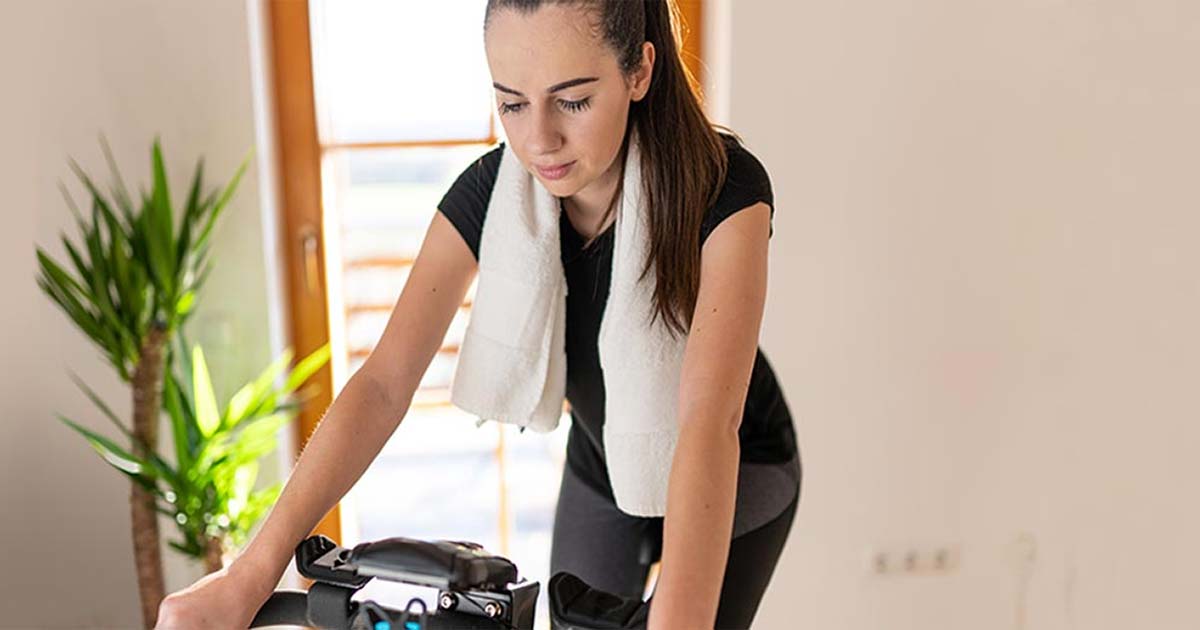How to Make the Most of Your Rowing Machine Workout
Advice to improve your movement, fitness, and overall health from the world's #1 in orthopedics.
In case you haven’t heard, rowing machines are the new stationary bikes. And with good reason: “Rowing is the best cardio you can do,” says Aaron Karp, MS, ATC, CSC, an exercise physiologist at the Tisch Sports Rehabilitation and Performance Center and HSS Brooklyn. “It’s the best bang for your buck, workout-wise.”

Here’s why rowing is so beneficial, how to use a rowing machine correctly and tips for maintaining proper technique.
Rowing Benefits
A rowing machine workout is super effective for strength and endurance training because it involves your entire body. “Nearly every muscle is used for rowing,” Karp says. “It works your legs primarily, but you’re also using your upper body and arms.”
When you row with proper form, you push with your legs and pull with your arms. This recruits your quads, glutes, hamstrings, calves, lats, rhomboids and biceps. “Rowing also requires good core strength,” Karp adds.
This makes rowing more effective than cycling or running. For some, it can also be more comfortable than running because of the reduced impact on the joints, Karp says. “Running is constantly loading your joints — the force of your foot hitting the ground climbs back into your body. You don’t have that with rowing. It’s especially good for people with achy knees.”
How to Set Up a Rowing Machine
Using a rowing machine is straightforward, but there are a few things to keep in mind to make the most of your workout.
Whether you’re working out at home or at the gym, it’s unlikely the rowing machine you’re using will require much upfront adjusting. “Basically, the only adjustment is the height of the foot stretchers, which are the straps at the base of the footrest,” Karp says. “If you have bigger feet, you’ll move the heel of the stretcher down. This is entirely based on your comfort; there’s limited research showing any one position relates to less injury or increased power.”
If you notice that it feels like you’re sitting on a hard chair and the bones in your butt get sore, look into purchasing pads to make your seat a little more comfortable.
Once seated, the only other adjustment you’re likely to make is to the resistance. With resistance, go easy. “The biggest mistake I see people make is setting the resistance too high,” Karp says. “If the machine has a resistance dial that goes from one to 10, stick to a number between three and five. That will most closely mimic rowing on water. Most people don’t have the core strength to handle anything higher than that — even competitive rowers keep the resistance in this middle range. And if you’re on there for a long time, too-high resistance will lead to increased load on your lower back.”
Proper Rowing Technique
As with setup, getting started on a rowing machine is relatively simple. Just remember this: legs, arms, arms, legs. “I tell people to say it aloud,” Karp says.
“Start with your seat all the way forward, your knees bent and your body compressed.

Drive with your legs, then pull back with your arms, bringing the handle toward your chest.” When you’re leaning back, the handle should come to the bottom of your sternum, he says.



“Next, move your arms back toward the start, and finally bring your legs back in. Do it as slow as you say it — ‘legs, arms, arms, legs’ — and then begin to speed up.”
If you move back toward the starting position with your legs first, your bent knees will get in the way of the handle, and you’ll have to lift the handle over your knees. Moving your hands back first avoids this.
Focus on your legs throughout your workout. “Remember, it’s primarily your lower body generating power, with your arms assisting you,” Karp says. “Think about driving with your legs.”
Also, try to keep your back neutral. “When you’re at the front of the machine, you’re going to be perched forward, but don’t round your shoulders,” Karp says. “Your torso should be a little bit forward at the top of the movement, and slightly backward when you slide back.”
Common Rowing Technique Mistakes
Here are a few common mistakes Karp has seen from years of instructing people on proper rowing form.
- Shrugging the shoulders too much, especially when pulling the handle toward the body. “Make a conscious effort to keep your shoulders from popping up toward your ears,” he says.
- Over-gripping the handle, which will burn out your forearms before your workout is done.
- An issue Karp refers to as “shooting the slide” — going so far forward your butt comes up off the seat, causing your back to arch. “This could lead to some back issues,” he says, “so focus on your spine being neutral.”
- Rounding the spine rather than hinging from the hips when reaching forward. “Even if you have less mobility and can’t reach as far forward, that’s better than doing it artificially by rounding your back,” Karp says.
How to Add Rowing to Your Workout Routine
As with any new exercise routine, start slowly and work your way up to more time. Start with five to 10 minutes of rowing and work up to 30 minutes and beyond. “You can get an effective workout in 20 to 30 minutes of rowing,” Karp says. “If you’re going for longer than 30 minutes, break it up; go for 20 minutes, then stand up, walk around and stretch for five minutes, and then go another 20 minutes. You can also break it up into intervals of greater and less effort.”
As to frequency, start with two to three times a week and then build up to four to five workouts weekly. “Seven days in a week is a bit much,” Karp says. “It’s not good to do the same thing — anything — every day. Your body needs a break.”
It’s also a good idea to augment your rowing with mobility and strength training. “With rowing, the hip flexors tend to get tight,” Karp says. To counter this, add side-to-side exercises like lateral lunges or lateral band walks, which are sidesteps from a mini-squat position with a band around your ankles. Also be sure to stretch your quads and hamstrings, which can also get tight from rowing.




